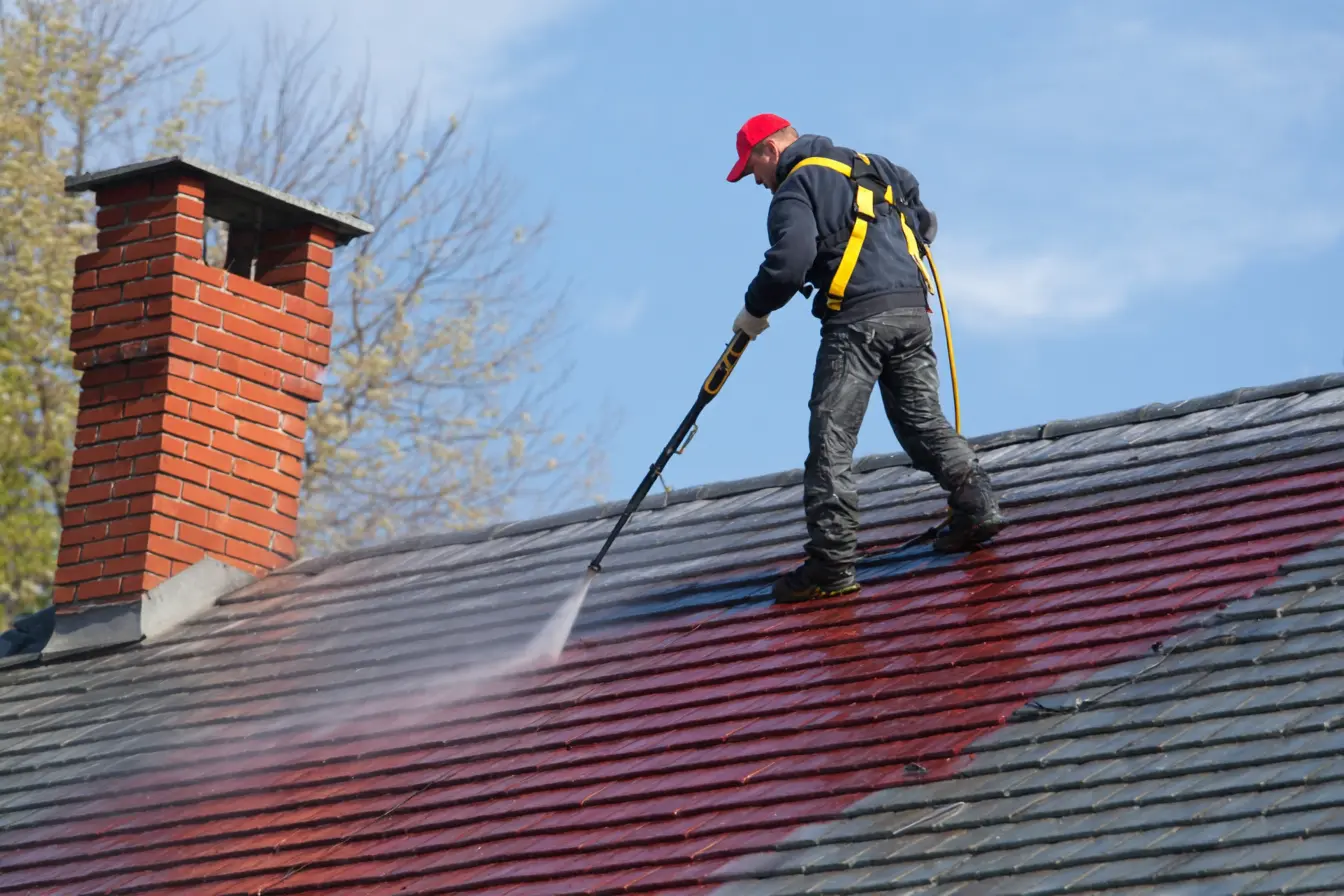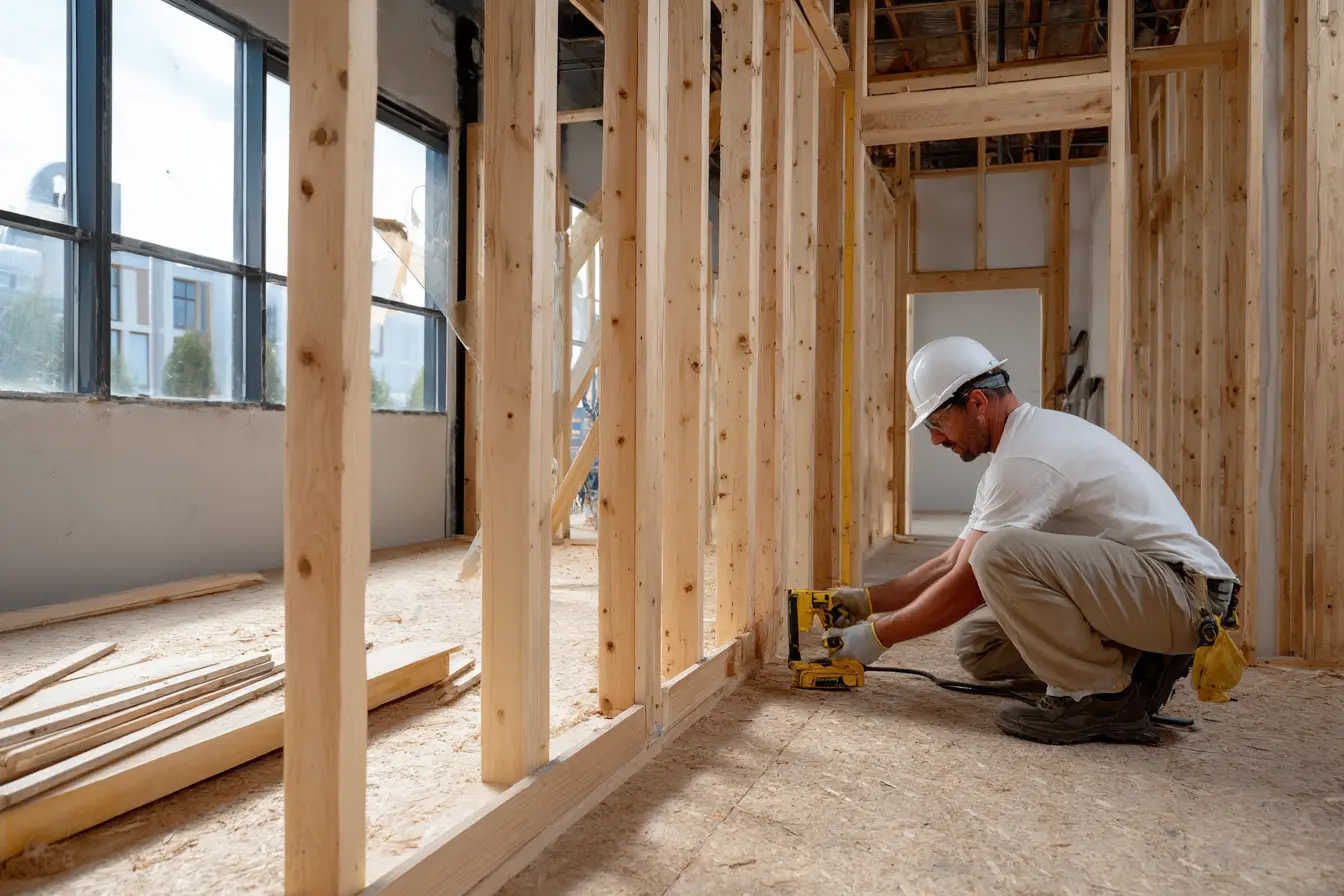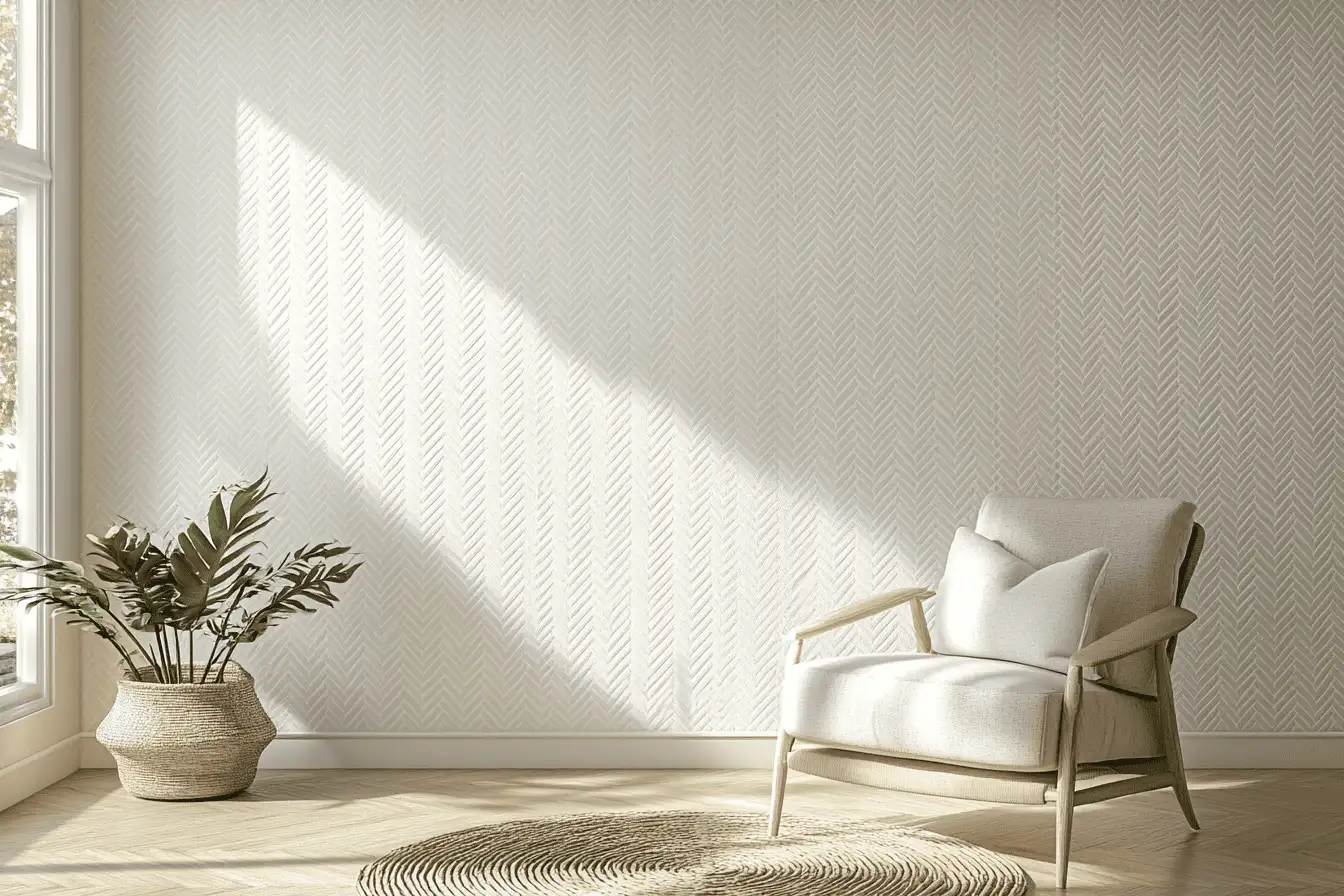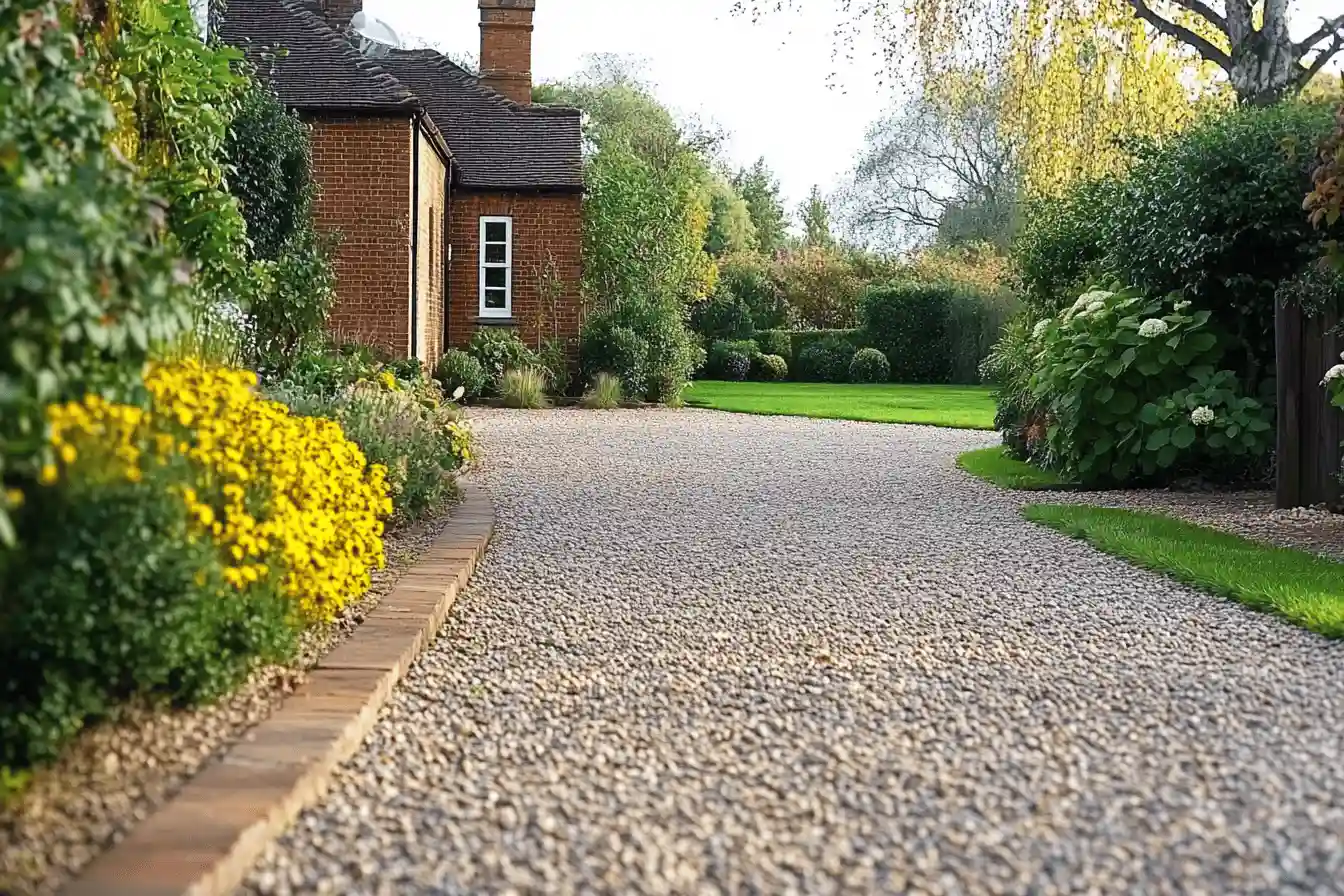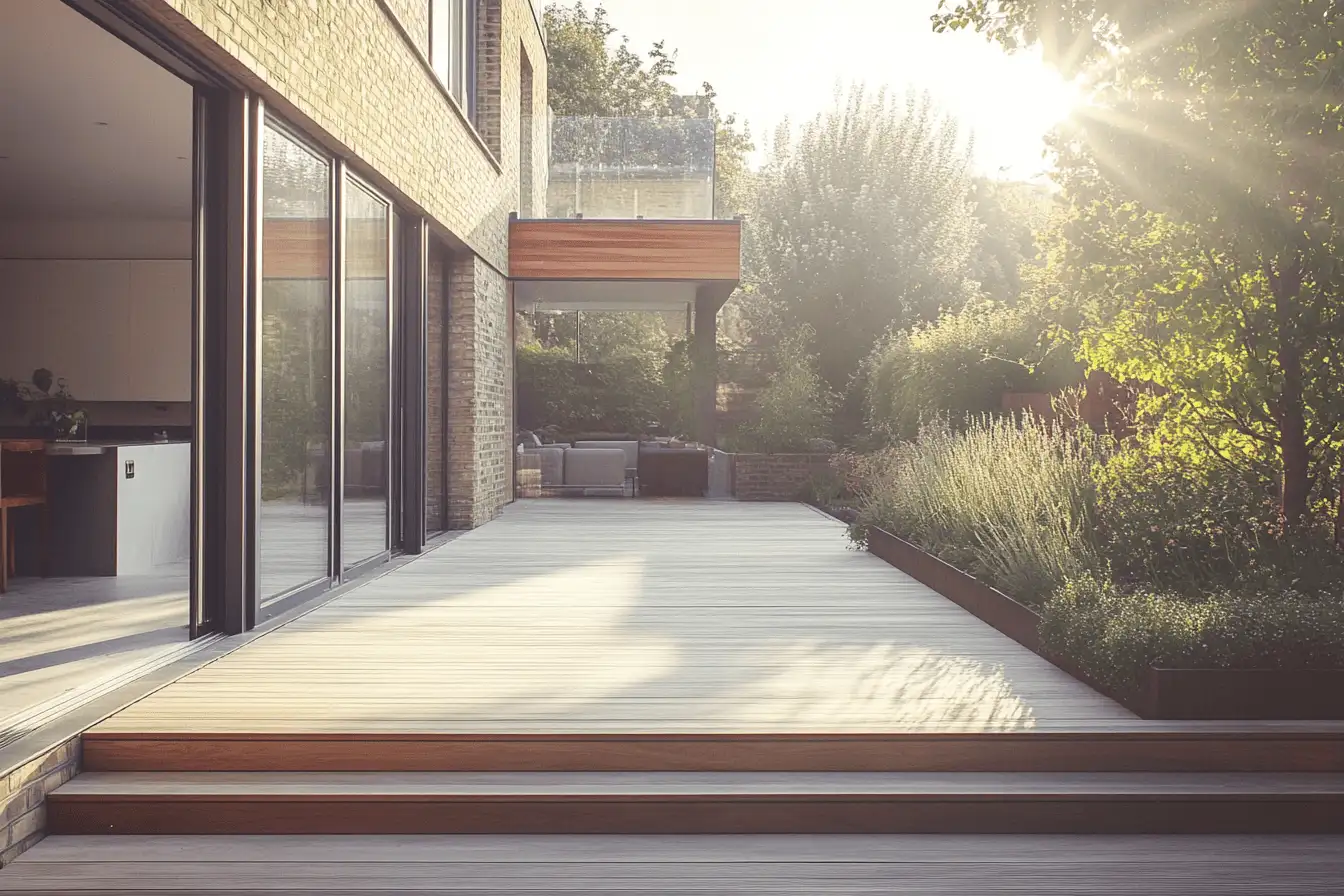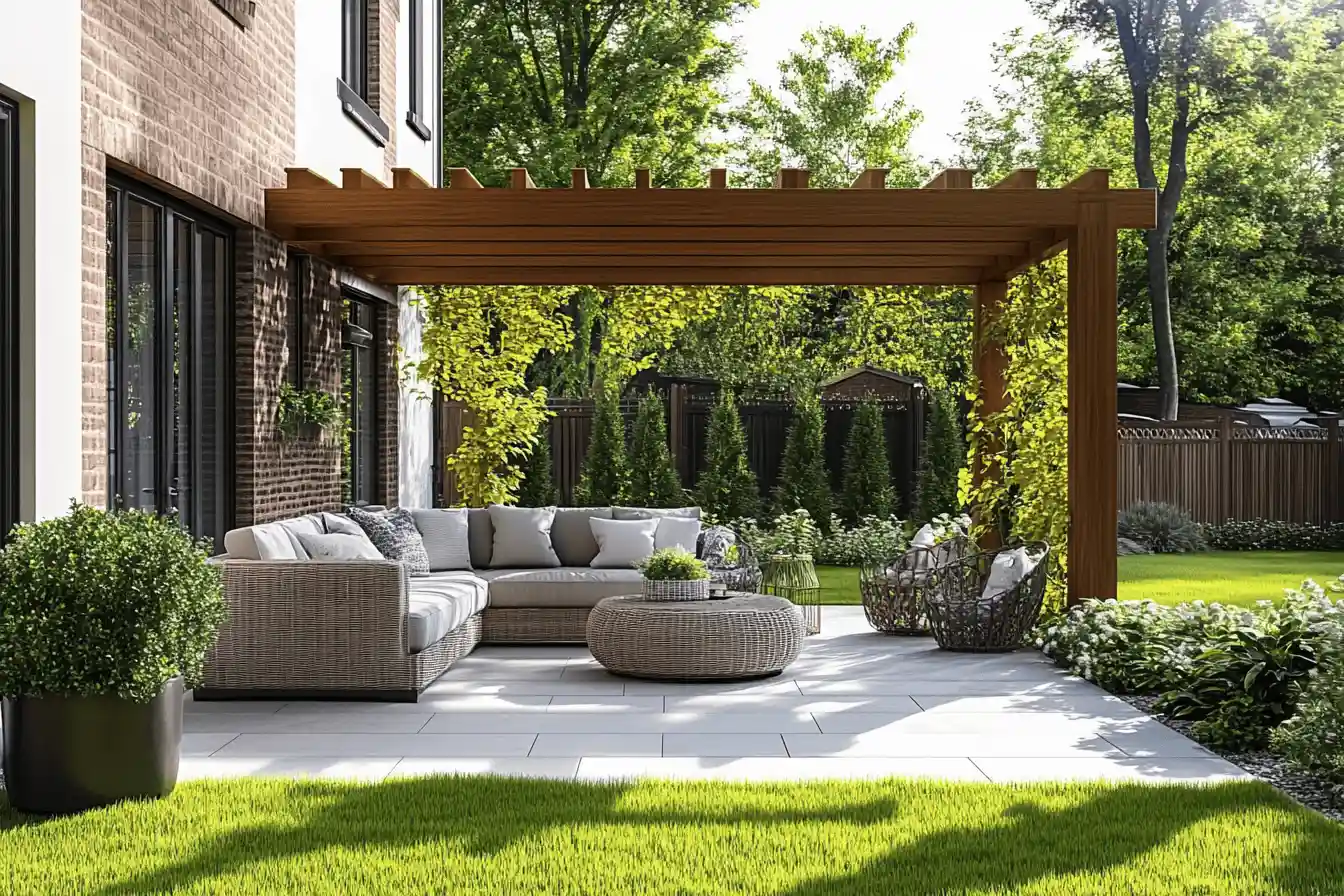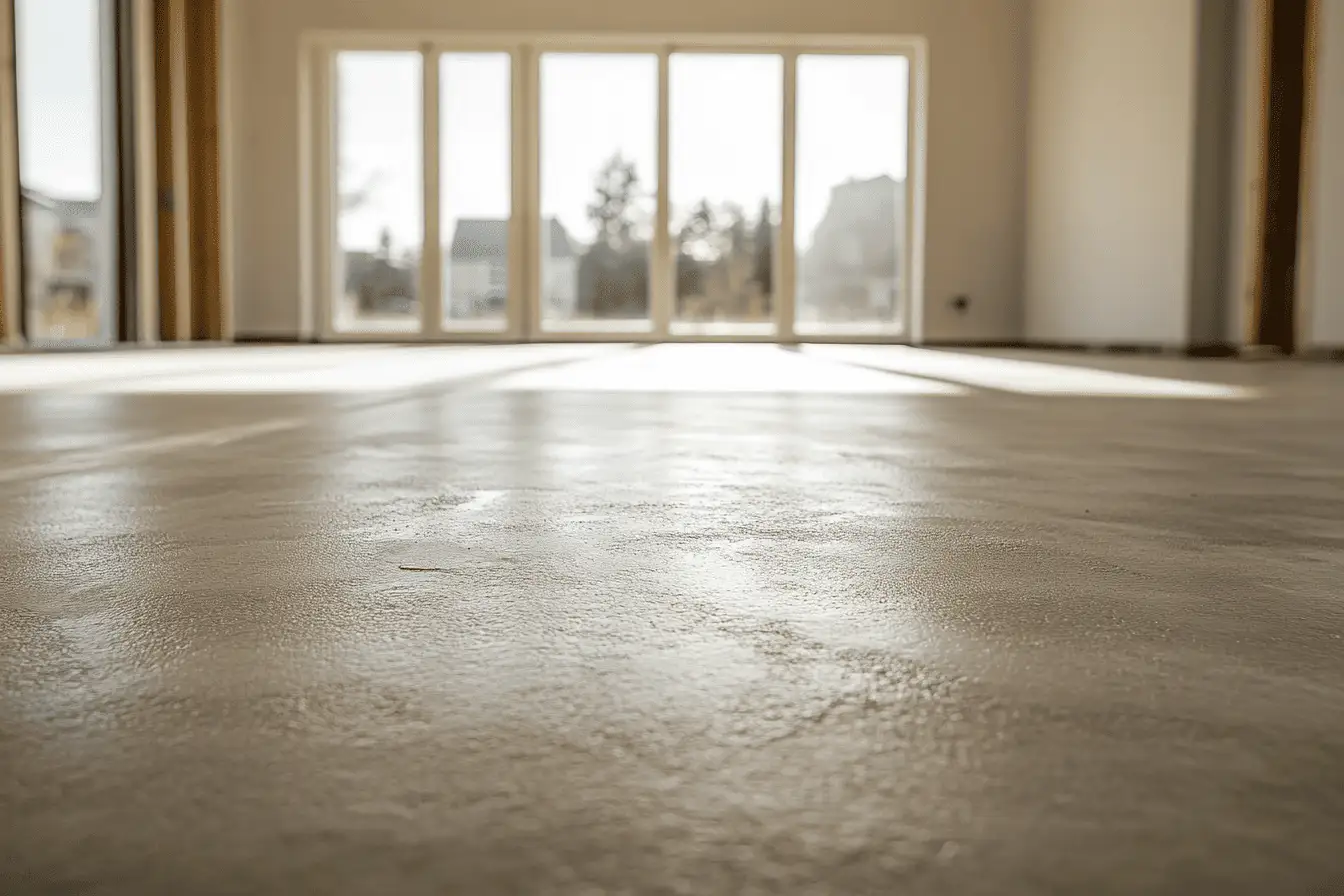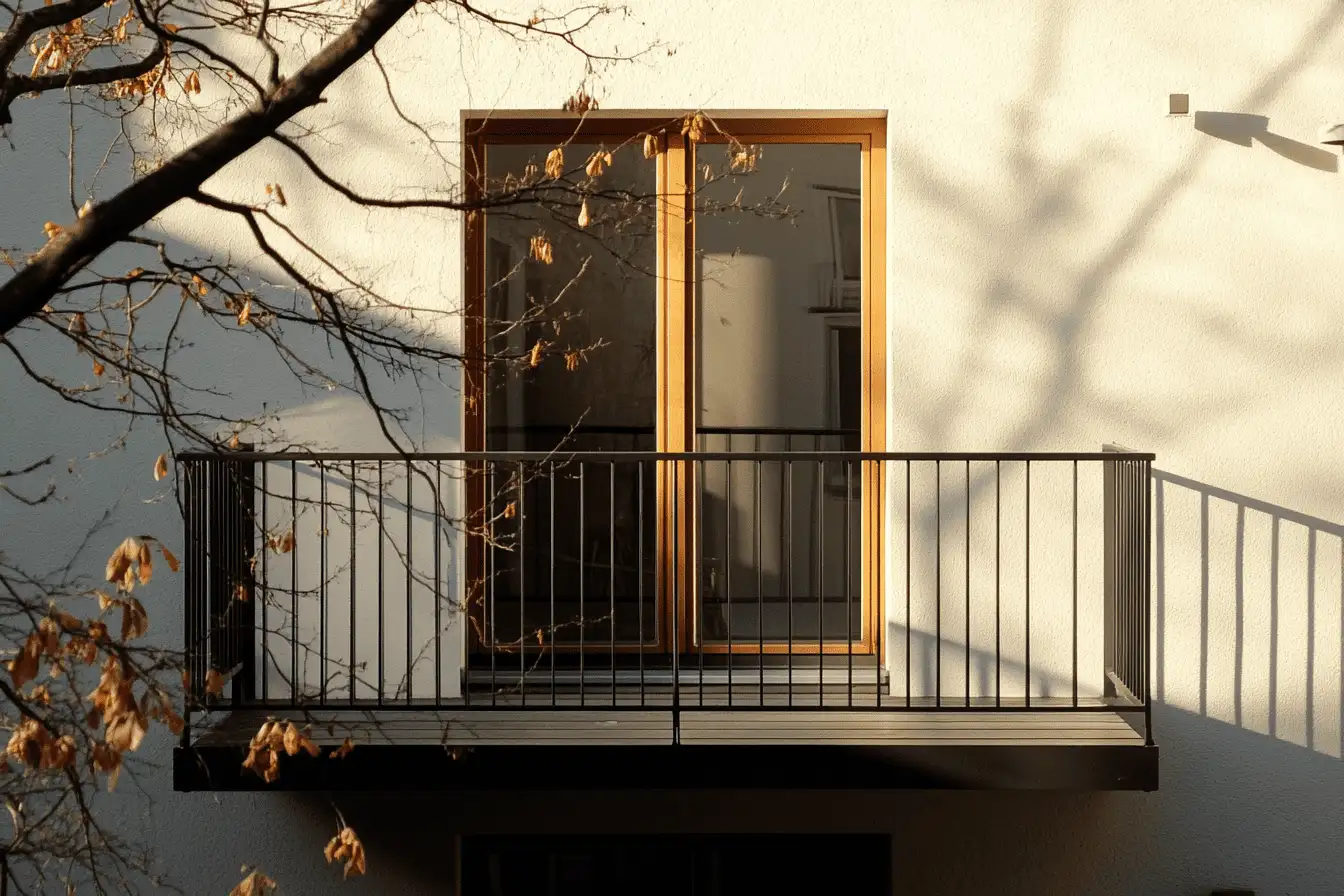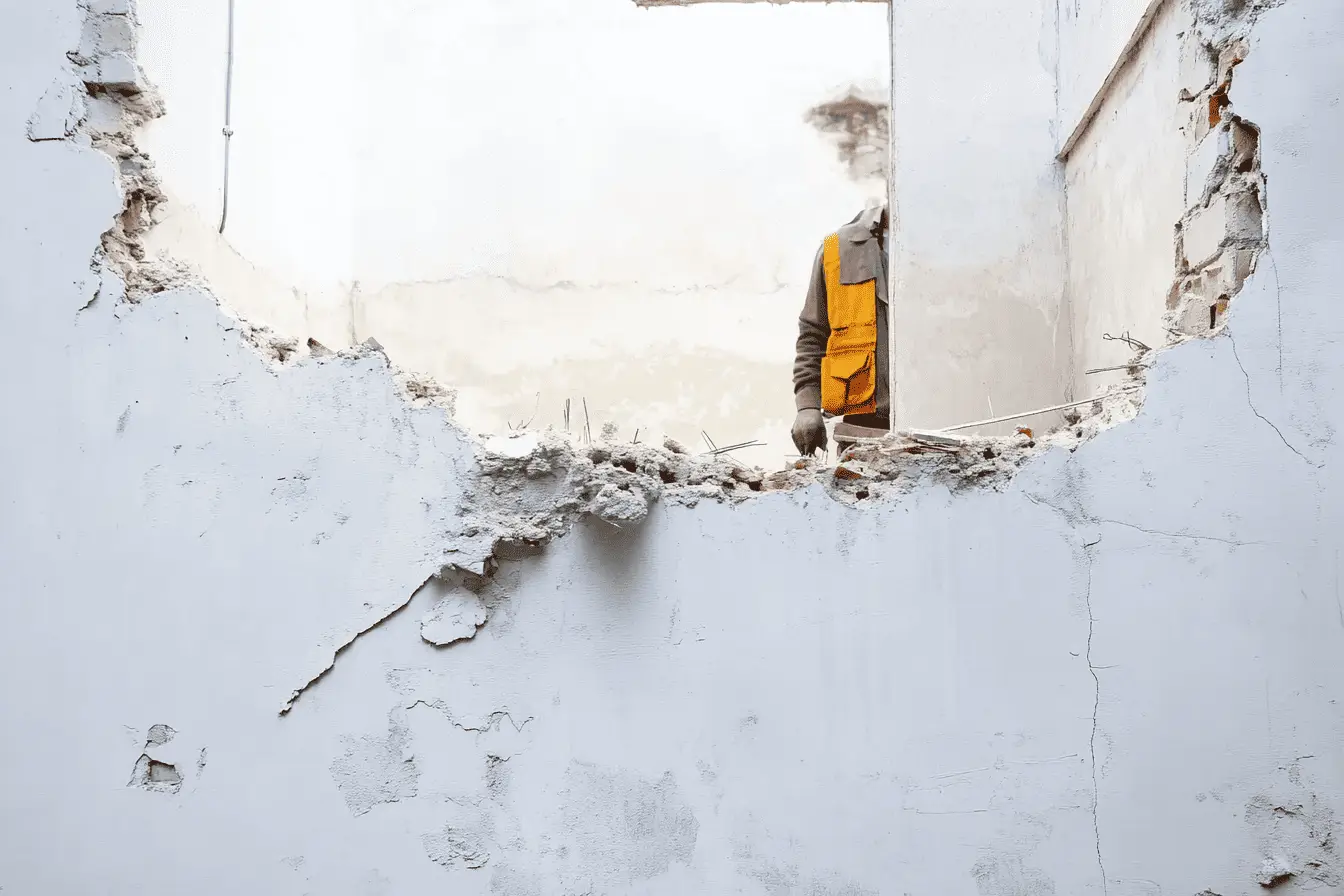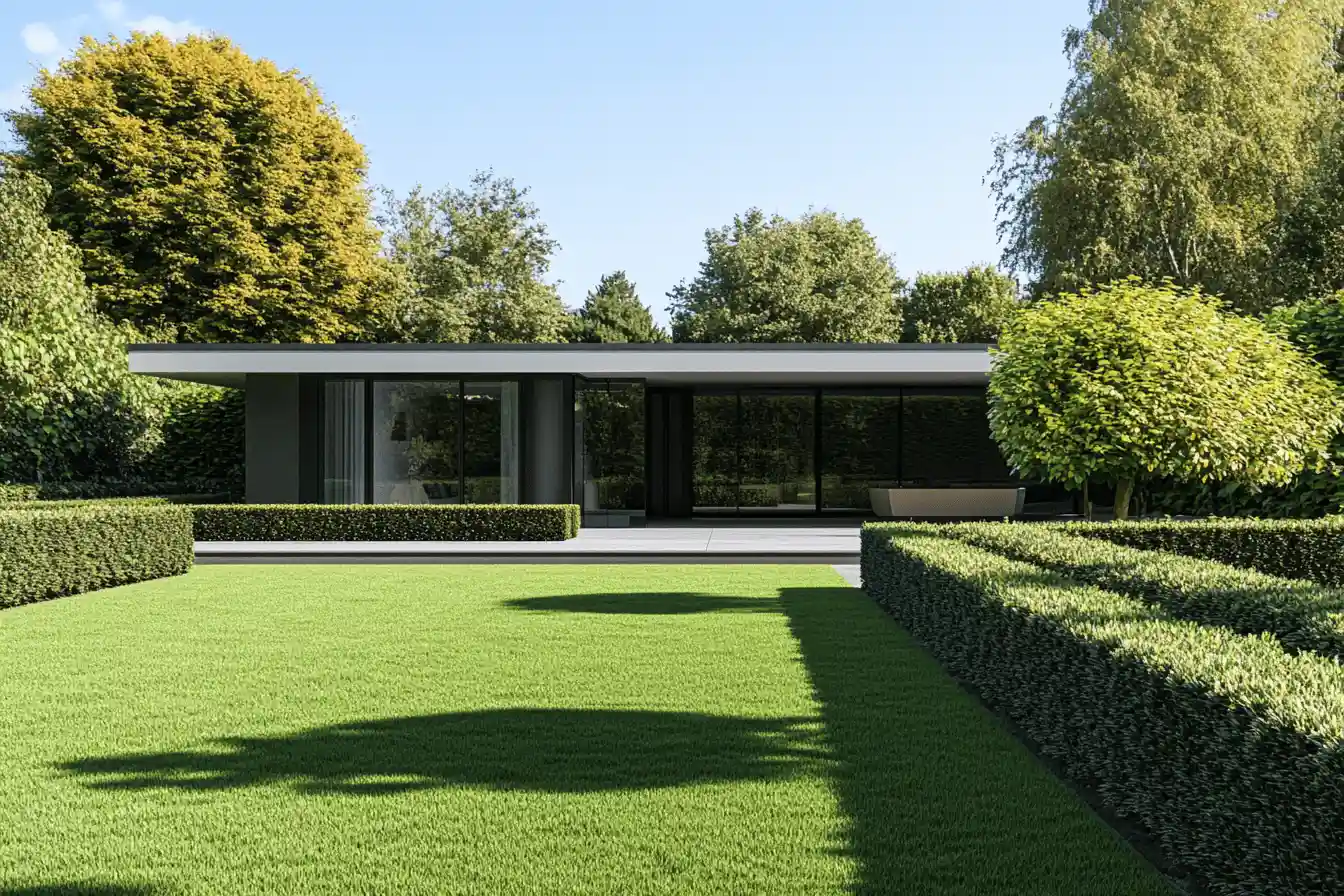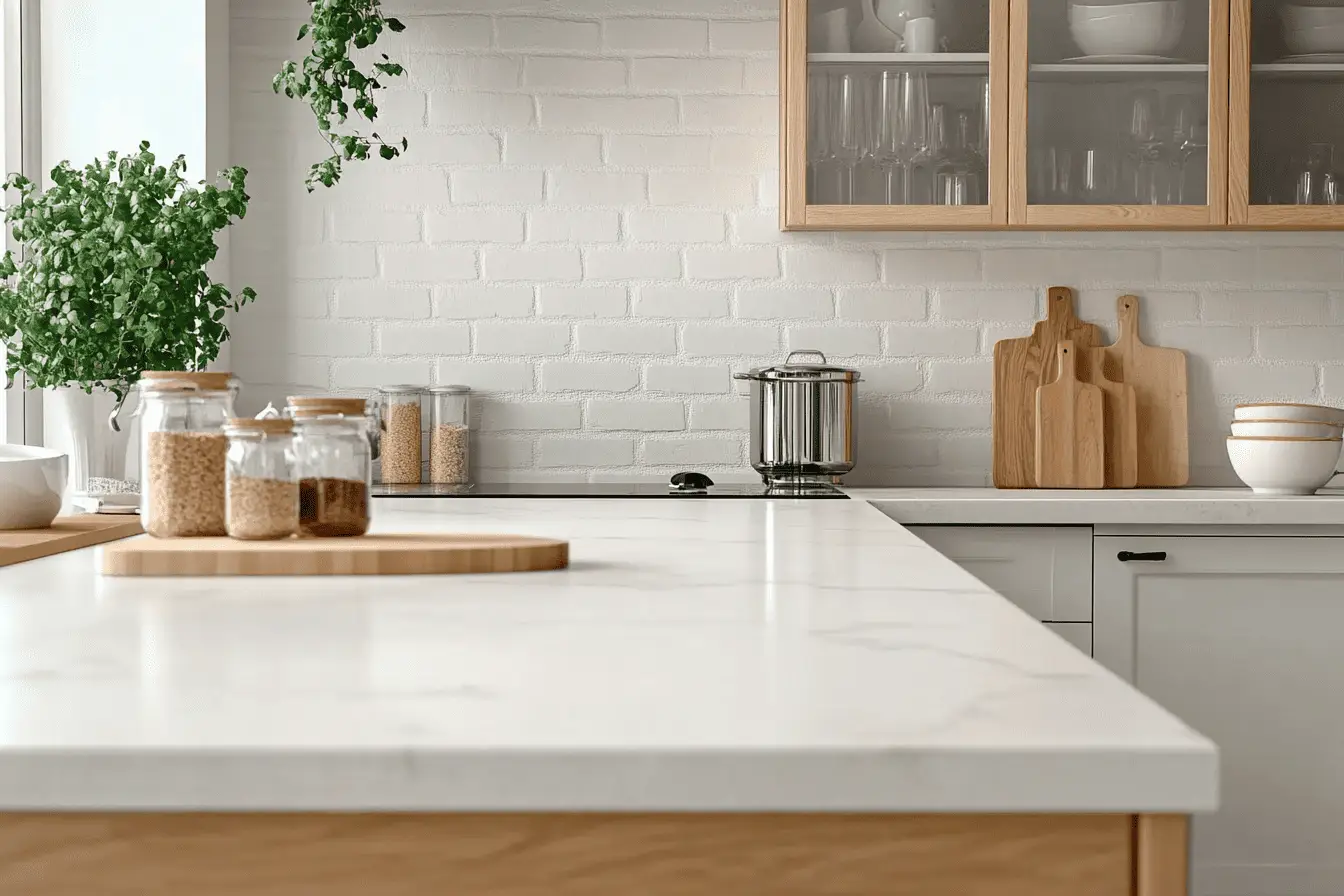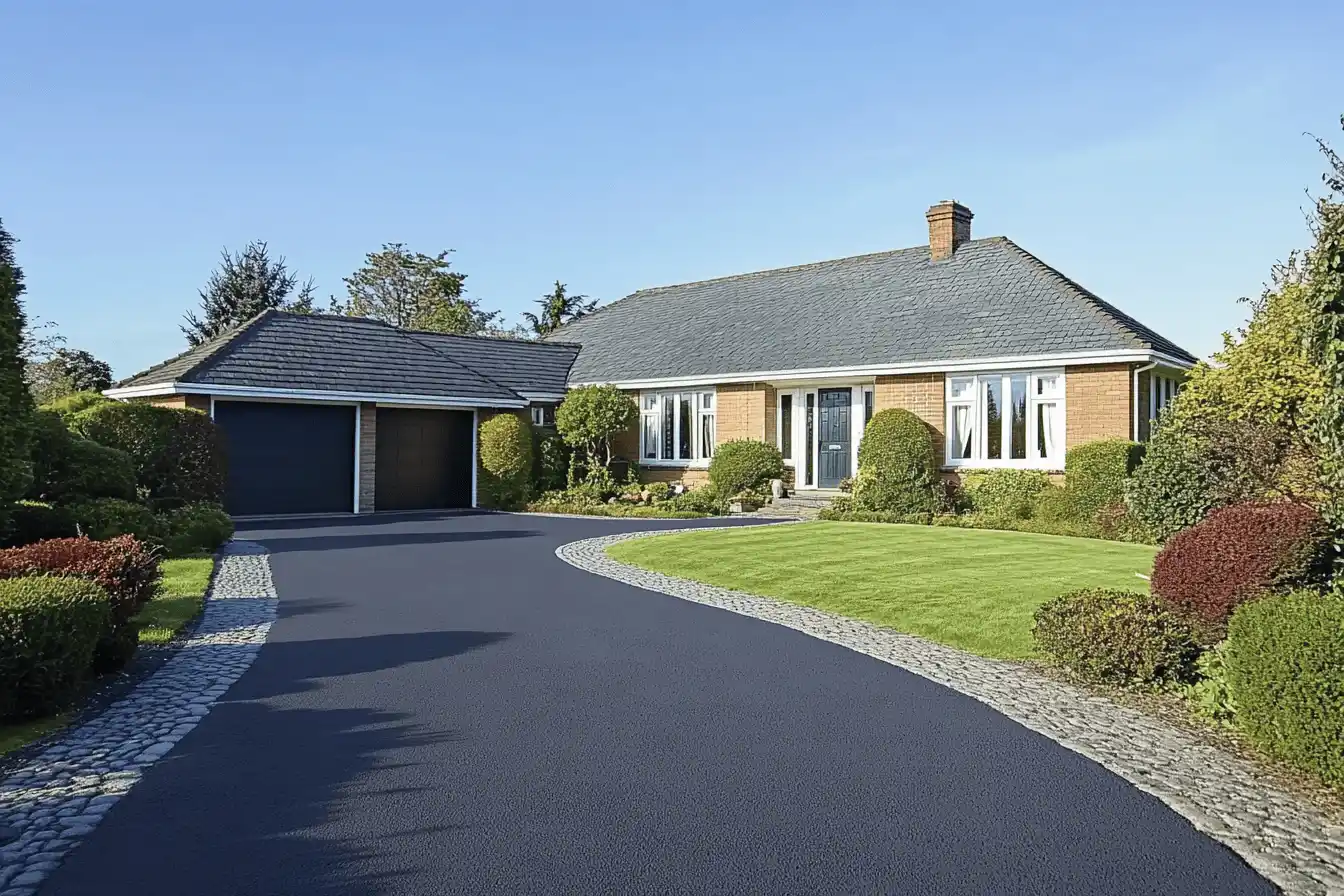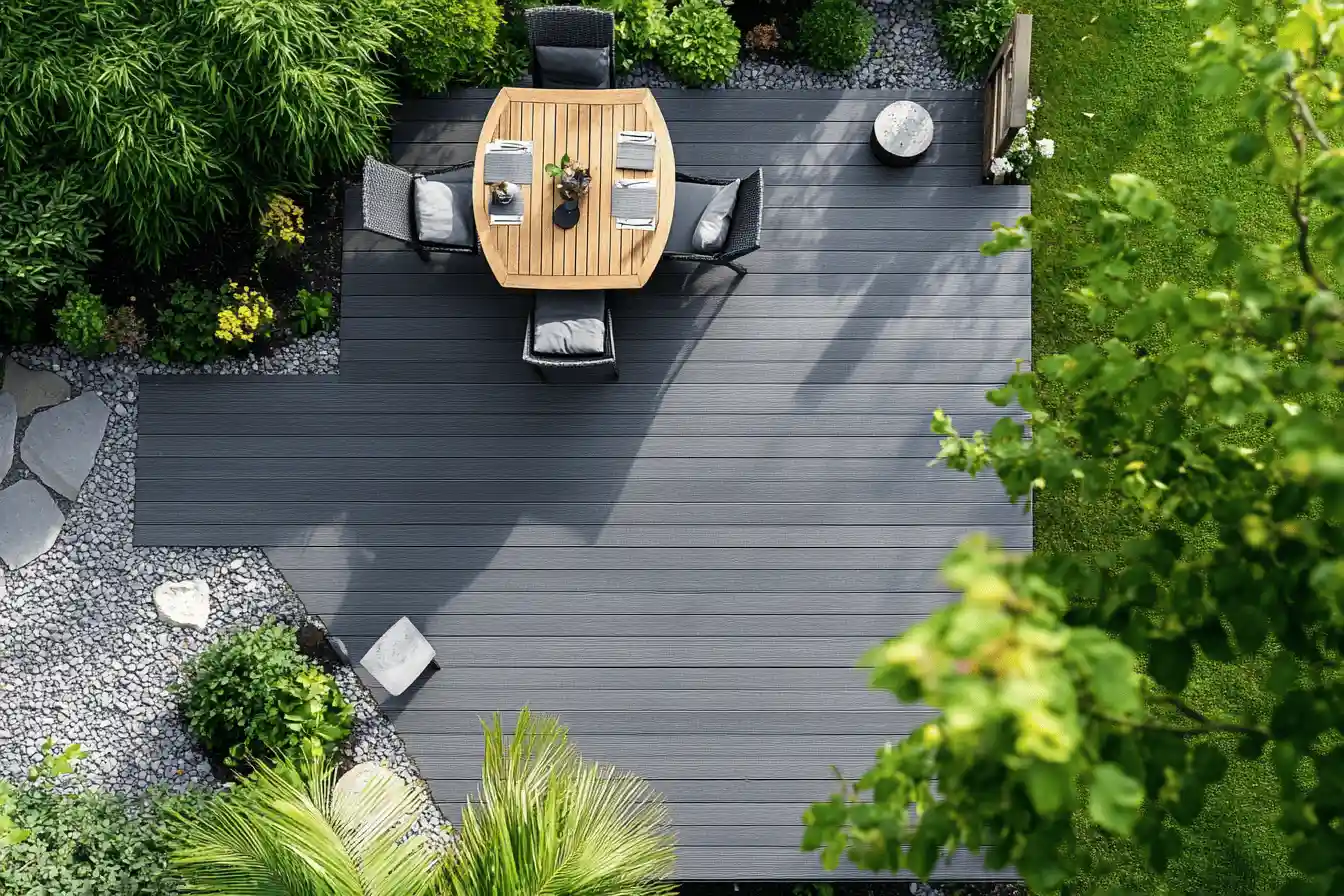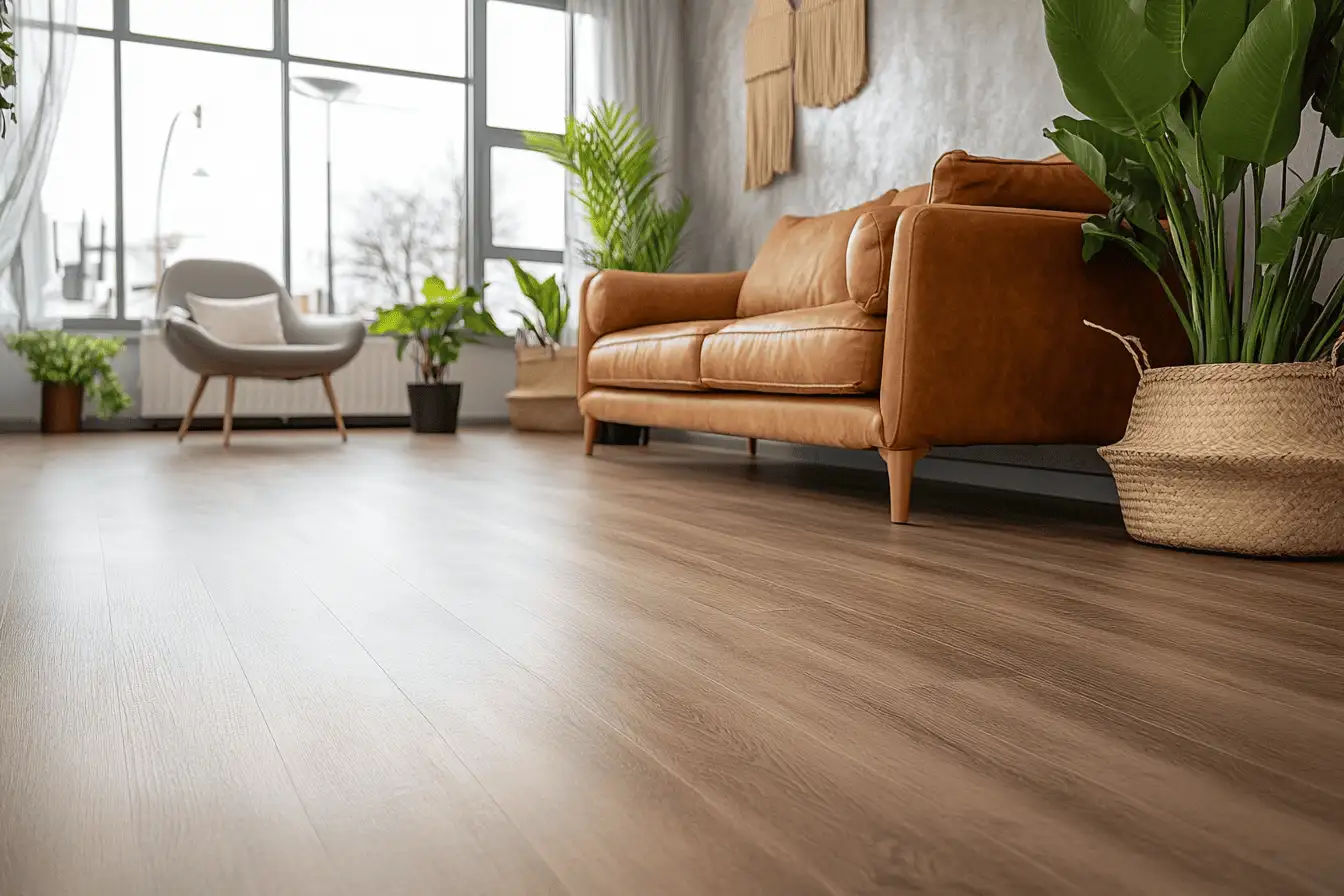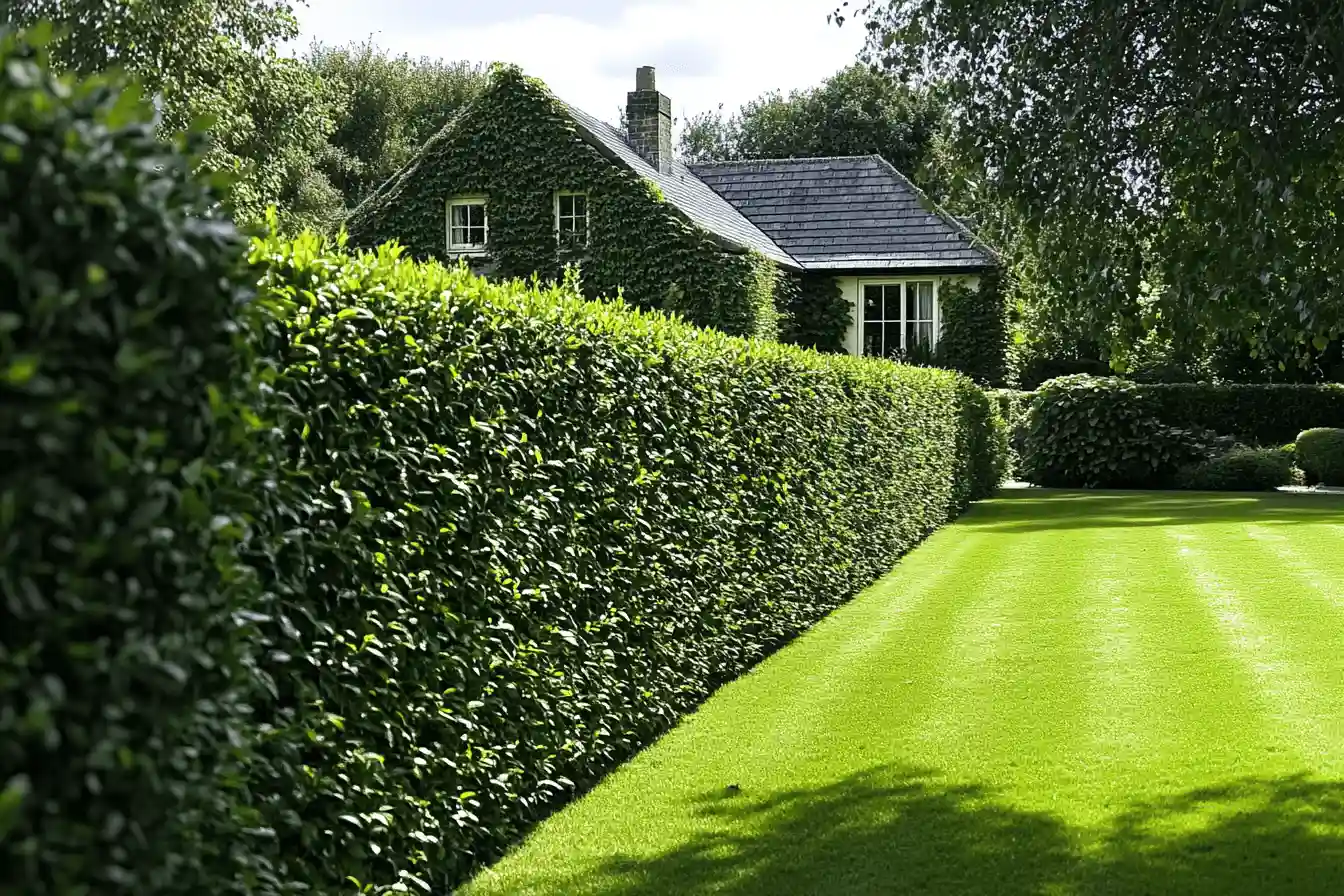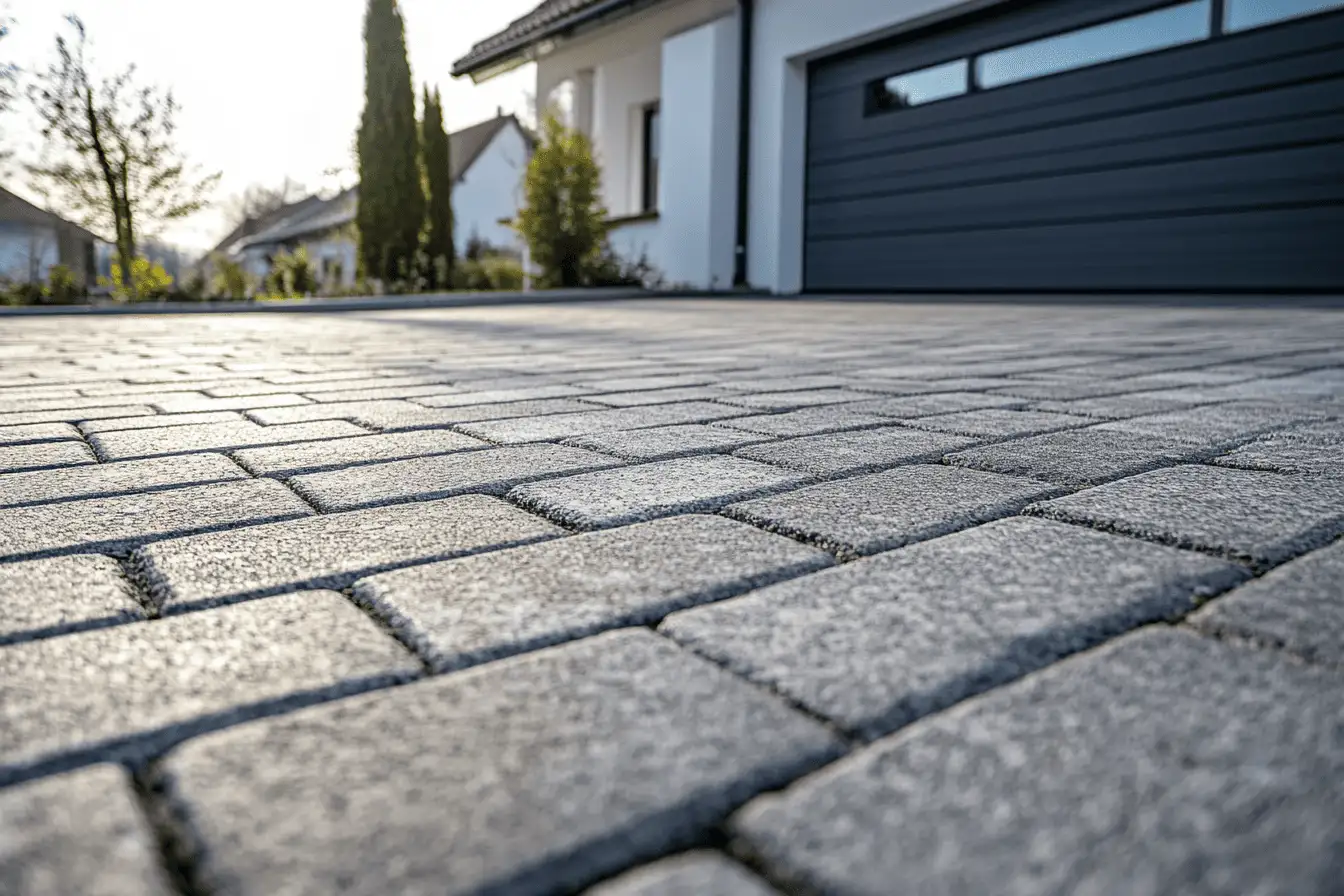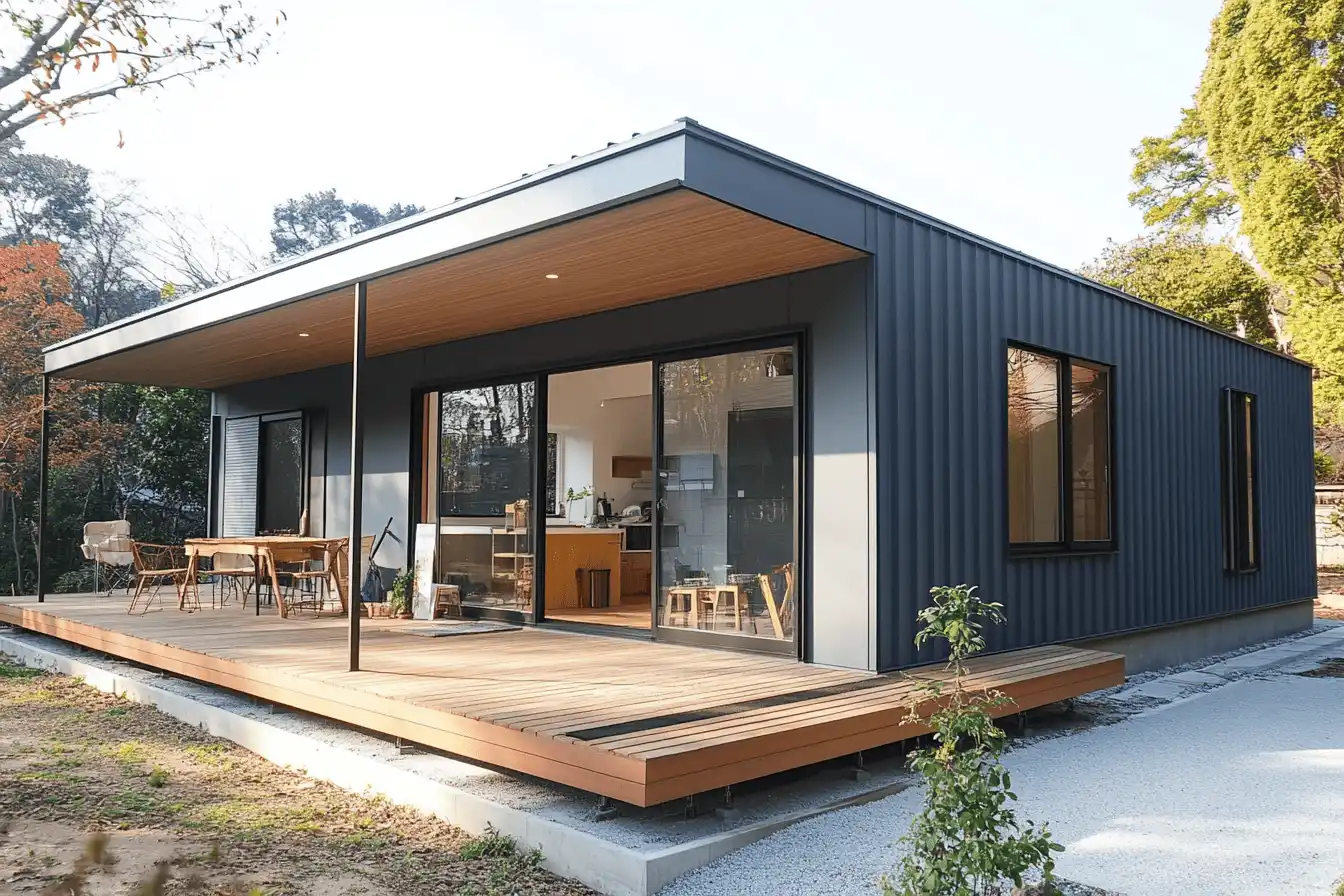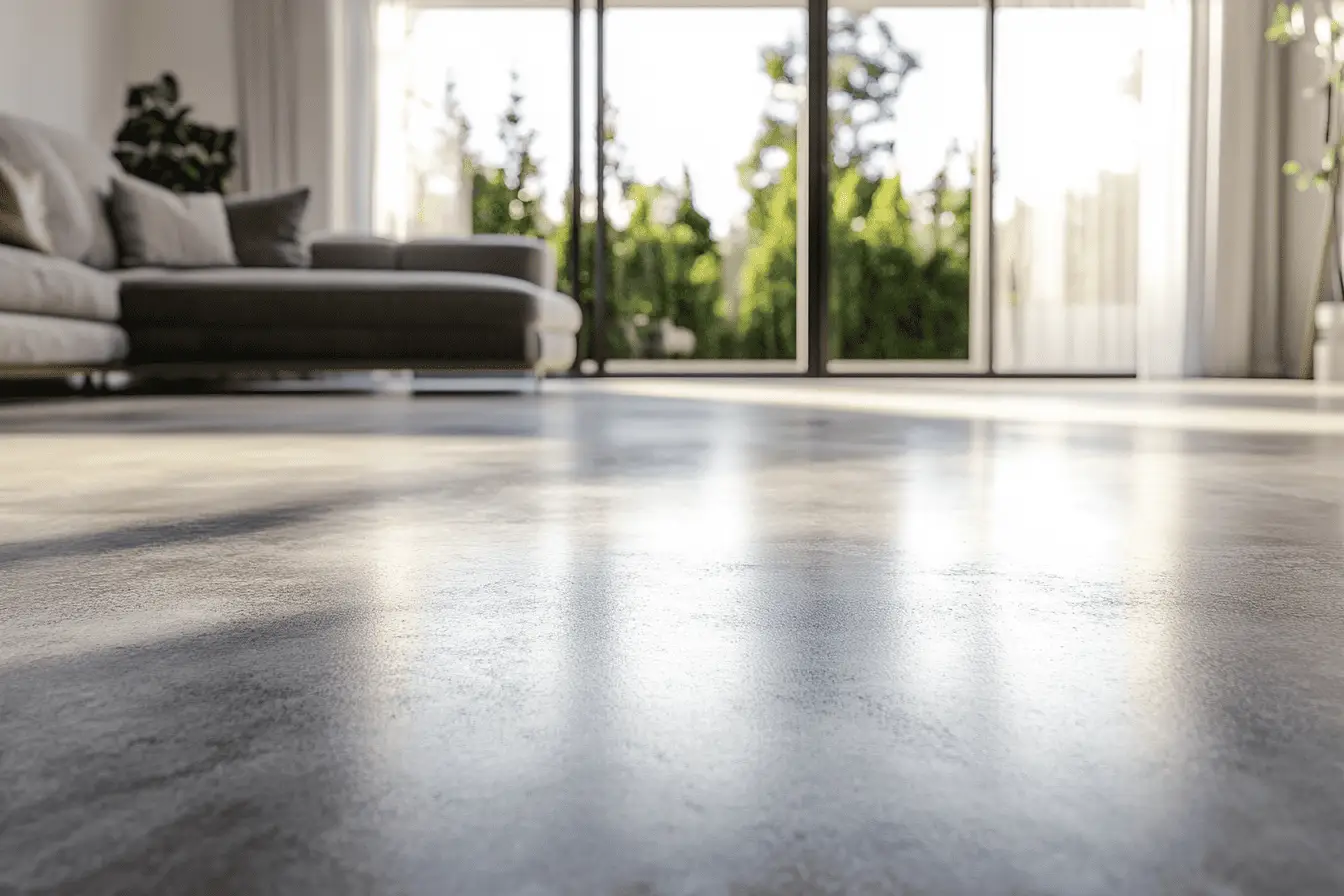
Whereas polished concrete flooring used to be primarily used in the industrial sector or for offices, it is now one of the trendsetting floor coverings in the private sector. Find out here which variants are available, what polished concrete floors cost per sqm in the UK and what savings can be made.
How much do polished concrete floors cost in the UK?
On average polished concrete floors cost between £75 – £130 per square metre in the UK. The decisive factor here is where the polished concrete floor is installed and what requirements it is subject to. This determines which material is used for the polished concrete floor, how it is ground and whether it is sealed or impregnated.
AVERAGE: £75 – £130 PER SQM
In residential applications, polished concrete flooring is usually made using cement screed or anhydrite screed, and the floor is then sanded to a satin or high gloss, polished and sealed or impregnated to make it even more resistant to stains, dirt and moisture. The sanding and sealing alone costs at least £45 per sqm.
Polished concrete floor prices including installation are usually at least £90 per sqm. Cement screed or mastic asphalt screed is often used outdoors, as these are less sensitive to moisture. Costs here start at around £75 per sqm.
For particularly luxurious or fancy material mixes and finishes such as coloring or patterning, the cost can be significantly higher again, even exceeding £140 per sqm. Depending on the material and finish used, the effort and labor costs also vary.
The cost of polished concrete floors can therefore be described as moderate and are certainly higher than some would initially expect. However, it should be noted that a polished concrete floor lasts for several decades if installed properly and virtually no costs are incurred for maintenance and care. Polished concrete as a floor covering is therefore a smart investment.
To understand better, here is an example of polished concrete flooring installation cost in the living room. The area is 40 sqm, anhydrite screed is used and the floor is sanded to a satin finish and sealed. The work will take place in a suburb of London. The figures listed are for guidance only including VAT and may of course vary.
Living room example: Polished concrete floor cost – UK – 40 m2
1 m² | 40 m² | |
|---|---|---|
Anhydrite screed | £15 | £600 |
Silk gloss sanding, polishing and sealing | £55 | £2,200 |
Labour costs (including mixing and installation) | £25 | £1,000 |
Total cost | £95 | £3,800 |
Save money: Compare concrete flooring installer prices in your area!
There are now platforms that help you compare prices of contractors and find the best value for money in your area quickly and easily. A recommendable service is that of Bark. It only takes a few clicks to fill out the form. Whether you accept one of the offers or leave it at the price overview is up to you. The service is non-binding and free of charge.
Which factors influence what polished concrete floors cost?
Since the polished concrete floor cost does not only consist of the material costs, the costs can sometimes vary considerably from project to project. The following points can influence the price:
- Which type of screed is used for the production (e.g. cement or anhydrite screed)?
- How quickly must the polished concrete floor be loadable (surcharge for faster drying screed)?
- Should the floor be colored before installation?
- Is underfloor heating also desired?
- How many square meters of polished concrete are to be installed?
- How should the floor be sanded (e.g. high-gloss sanding)?
- Should the floor be impregnated or sealed afterwards (offers better stain protection, among other things)?
- How high is the hourly wage of the specialist company?
What exactly is a polished concrete floor?
Unlike other screed variants, which merely serve as a substrate for other floor coverings such as parquet, laminate, carpet or tiles, polished concrete floor is a floor covering in its own right. After installation, the concrete floor is usually sanded and, if desired or depending on requirements, sealed or impregnated.
Polished concrete flooring is not only very trendy for several years, but also a durable, robust and easy to maintain flooring, which can also be installed together with underfloor heating, is a good conductor of heat and pleasant to the feet.
It is suitable for both indoor and outdoor use. Depending on the location, requirements and budget, the polished concrete floor is made of different types of screed, such as cement screed, anhydrite screed or mastic asphalt screed, each of which brings different properties.
What are advantages and disadvantages of polished concrete floors?
In addition to the trendy “industrial look”, which for many is a main argument for polished concrete floors, the flooring also offers other advantages. A professionally installed polished concrete floor requires hardly any maintenance and is extremely durable.
It can also be used very creatively, because it is possible to color the concrete in virtually any color before installation and thus to adapt it very selectively to the room design. Since it can be laid in liquid form and has good thermal properties (conducts heat well), the floor covering also harmonizes well with underfloor heating.
A possible disadvantage of polished concrete flooring is the relatively long drying time. The drying time can be up to 7 weeks before the floor is fully loadable, if inexpensive cement screed is used. However, for a material cost premium of about 50%, anhydrite screed can be used as an alternative, which takes only about a week to dry.
If the polished concrete floor is loaded too early, cracking may occur. In general, faultless installation is demanding, which is why it is advisable in most cases to commission a specialist company to do the job.
Is sealing / impregnation necessary after sanding?
After installation, the floor is sanded and polished. Sanding and polishing already gives a good surface protection and it is possible to seal or impregnate the floor afterwards. This will protect it even better from grease stains, dirt and moisture.
In addition, sealing or impregnation also makes it more pleasant to walk on the floor, as it becomes smoother to the touch and more slip-resistant. Substances such as epoxy resin or latex are used for this process, among others. The additional costs are worthwhile, especially in living areas, as the polished concrete floor gains in durability and also has a more refined appearance.
Sealing and impregnating: What is the difference?
Both sealing and impregnating the floor after grinding and polishing are used to further improve protection against stains, dirt and moisture. Sealing is slightly less expensive than impregnation in this regard, but impregnation provides more durable protection because the surface layer does not peel off over time as it would with sealing.
This is because impregnation allows the protection to penetrate beneath the surface. Sealing or impregnating is not always necessary, as the floor already has a surface protection due to the sanding and polishing. However, especially for living rooms, it is advisable to seal or impregnate the floor after sanding and polishing.
Can polished concrete floors be combined with underfloor heating?
A polished concrete floor is a very good choice for a joint installation with underfloor heating. This is partly due to the good thermal conductivity of the concrete and partly because it can be laid in liquid form. Polished concrete flooring and underfloor heating is a proven and recommended combination.
Are polished concrete floors suitable for outdoor and wet areas?
Yes, polished concrete floors are versatile and can be used both outdoors and in wet rooms such as bathrooms. Here it is only important to resort to the appropriate type of screed for the creation of the floor.
Mastic asphalt screed and cement screed are particularly insensitive to moisture and therefore well suited for exterior use and in damp rooms. Other types of screed, such as anhydrite screed, which is popular in residential areas, would be rather unsuitable here. If the wrong material is chosen for the polished concrete floor, moisture damage, mold or cracks can quickly occur.
How long do polished concrete floors last?
Durability is one of the greatest strengths of polished concrete floors and one of the reasons why the rather moderate costs are worthwhile. Especially if the concrete floor is professionally ground, polished and then sealed or impregnated, the floor can easily last for several decades. Hardly any other floor covering can keep up with this.
Can I lower the polished concrete floors cost by installing it myself?
Proper and flawless installation of polished concrete floors is definitely not one of the easier do-it- yourself activities in the home. Mistakes during installation or drying will inevitably lead to the formation of cracks in the floor. But proper know-how is also essential for mixing and mixing the concrete before installation, as well as the subsequent grinding, polishing and impregnating or sealing.
It gets even more complicated when the polished concrete floor is installed together with underfloor heating. The bottom line is that the installation of polished concrete floors is only something for professionals and the attempt to reduce costs can quickly backfire if you install it yourself and incur costs for subsequent corrections to the floor.
3 savings tips to reduce your polished concrete floors cost
3. Make use of the free price comparison!
Because the cost of polished concrete floors can vary greatly from region to region and from specialist company to specialist company, a price comparison is always recommended in advance.
When comparing prices, you can not only find the lowest price in the region, but you can also compare the companies’ ratings at the same time, which makes it quick and easy to find the best deal.

